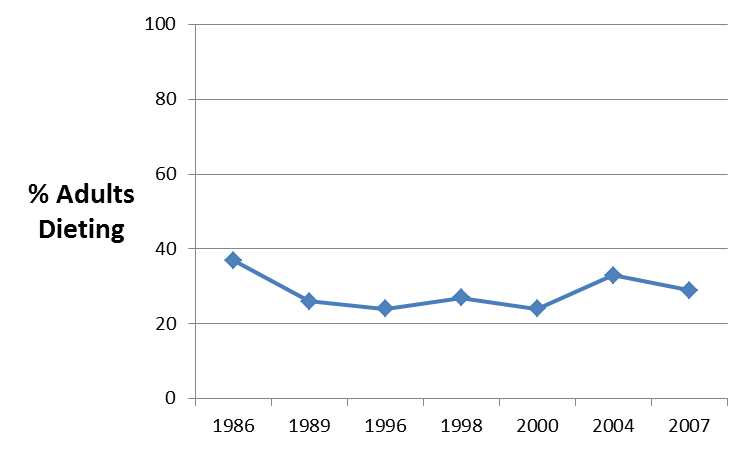Introduction
Over 33% of the adult US population is obese, and an additional 34% are considered overweight. Patients are often trying to lose weight, and it is estimated that Americans spend $33 billion dollars per year on products for weight-loss. Patients may fall prey to the newest fad diets, which often promise dramatic weight loss despite being largely untested.

It is important that patients know the truth about dieting, and that we are able to guide their choices.
- 98% of people who lose weight gain it back within 5 years
- 90% of people who lose weight gain back more weight than they originally lost
- Only 5 -10% of dieters maintain weight loss > 10% of baseline weight
Why do diets fail?
- People revert back to old habits after diet ends
- Many diets are not sustainable
- Deprivation leads to bingeing
- Dieters continue to rely on internal cues.
Sustainable weight loss is often the result of a lifestyle change and not a "diet" with a start and end date connected to it. A recent Consumer Report rated popular diet books and plans and provided common sense tips for sustainable weight loss: http://www.consumerreports.org/cro/food/diet-nutrition/diets/diets-6-07/overview/0607_diets_ov.htm. Teens who are tempted to lose weight by adopting one of the fad diets should read the information at this web site: http://www.youngwomenshealth.org/fad_diets.html.
Most popular diets fall into one of two categories: Low Carb/High Protein or High Carb/Low Fat diets.
| Low Carb/High Protein | High Carb/Low Fat |
|---|---|
|
- Emphasize protein intake - Restrict calories - Tend to be higher in fat
Examples: Atkins Protein Power The Zone |
- Emphasize carbohydrate intake - Tend to be higher in fiber and lower in fat
Examples: The Pritikin Diet Volumetrics DASH |
There are many fad diets. However, this learning module will focus on several of the more popular diets, which are listed here:
- Atkins
- DASH
- Ornish
- Vegetarian
- Mediterranean
- Paleo Diet
- Gluten Free

